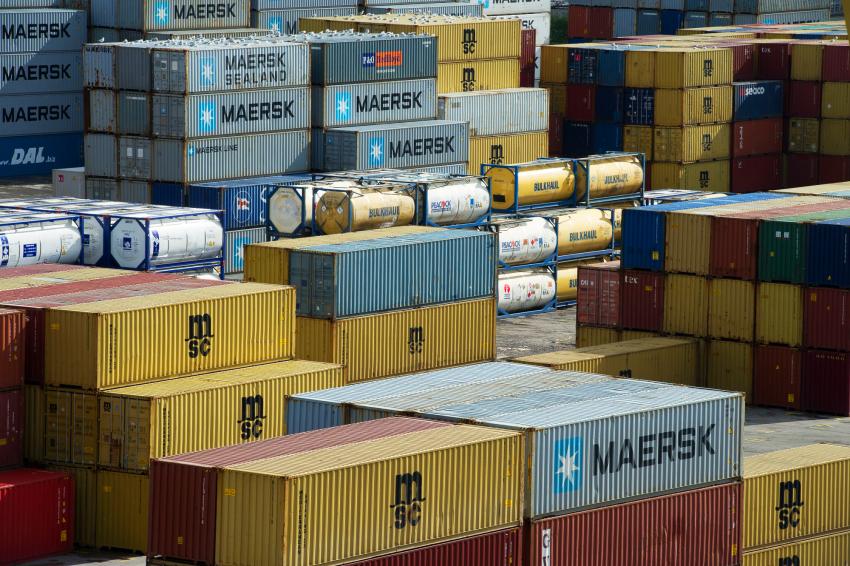Last year the Port of Riga managed to maintain a stable cargo turnover, handling 18.8 million tonnes of various cargo, which allowed it to rank second among all ports of the Baltic States. For the first time in its history more than 5 million tonnes of containerised cargo were handled, and the total volume of containerised cargo handled at the Port of Riga has increased by almost 10%. The port also set a record for the number of cruise passengers - nearly 82,000 tourists from around the world visited Riga last year. The decrease in total cargo volumes shall be attributed to the decline in energy transit cargo (coal and oil products) due to geopolitical processes, and this drop has not been fully compensated by growth in other cargo segments.
Last year was particularly productive for the container cargo segment with the Port of Riga setting a new record by handling more than 5 million tonnes of containerised cargo (465.4 thousand TEU) for the first time in its history. Furthermore, containerised cargo was the largest cargo group for the first time in the history of the Port of Riga, accounting for 27% of the port's total cargo portfolio. Compared to the previous year, container cargo volumes increased by 9.8%.
“Given the difficult and unpredictable situation within the sector, I believe that the port has performed well. The energy transit cargo (coal and oil products) have practically gone, but all other segments are developing successfully, and new cargo volume records have been achieved in several of them,” said Ansis Zeltiņš, the Freeport of Riga CEO, positively assessing the port's performance.
According to the accumulated data for 2023 the total cargo turnover in the Port of Riga reached 18.8 million tonnes, which is the highest among Latvian ports and the second highest in the Baltic States. The drop in cargo volumes compared to the previous year amounted to 20% and was mainly due to a significant reduction in the handling of coal transit cargo. Last year, coal transit in the Port of Riga stopped completely, its volume decreased by 62% compared to 2022.
“The turnover figures for 2023 confirm that the long-term strategy of the Port of Riga has been correct in prioritising the development of the container, agricultural product and timber cargo segments, as well as promotion of the cruise industry,” noted Ansis Zeltiņš.
Amount of the second largest handled cargo segment, timber, remained at a relatively low level. A total of 4.62 million tonnes of timber cargo was transhipped in 2023, which is 15.3% less compared to the previous year. This might be attributed to the economic slowdown and the low level of demand in traditional export markets.
Agricultural cargo was the third largest cargo segment in the Port of Riga last year and its transhipment volume in 2023 reached 3.47 million tonnes, which is 18.8% more than in the previous year. In 2023, the highest performance indicator in the history of the port was reached in this segment. Among agricultural products, wheat has been the most transhipped commodity at the port terminals, while rapeseed has been the second most transhipped one. The vessels were also loaded with leguminous crops and various types of animal feed for further transhipment.
Last year several new cargo groups, such as stone rubble, which already accounts for 4% of the port's total cargo turnover, have become important for the port operation. Compared to last year, the Port of Riga has handled 23% more stone chips. It is an import cargo, mainly used for construction purposes in Latvia and the Baltic States. Due to the implementation of major construction projects in the Baltic States in the coming years, the demand for stone chips is expected to increase and the turnover of this cargo segment in the Port of Riga is also expected to grow. It has already been reported that the 2023 cruise season has been highly successful, bringing 81.7 thousand tourists to Riga, which is a new record number for cruise passengers.
“The transport, logistics and port industry will continue to face uncertainty in the coming year. Still, it is assumed that as the economy stabilises, market activity will increase, which will also affect the flow of goods through the Port of Riga. At the same time, it should be borne in mind that the transport sector may also face significant shocks in the coming year as war continues, and sanctions, trade bans and boycotts may apply to new commodity groups, modes of transport and logistics destinations. Logistics supply chains that are currently in place may again be completely disrupted and it is unpredictable what impact this might have on the Port of Riga” emphasised the Freeport of Riga CEO, forecasting the development of the port this year.
According to both analysts of the Freeport of Riga Authority and representatives of the port terminals, 2023 should be seen as the “new normal”. There is hope that the lowest point in terms of cargo volumes handled in the port has been reached. The aim now is to increase cargo volumes again each year, striving for innovation, value-adding and smart industrialisation of the port. “The challenge for next year will be to maintain and grow the port's cargo turnover. In the current geopolitical and market situation, this can be achieved by changing our vision for the port development. In the long term, cargo volumes can be secured solely by developing the Port of Riga as a high added value industrial cluster with powerful logistics service providers, modern production facilities, innovation and research centres, continuing the integrated digitisation and automation of the port operation, implementing green energy, environmental and neighbourhood projects”, added A. Zeltiņš.
Information for media

- [email protected], +371 670 308 53
- Freeport of Riga Authority
- 12 Kalpaka blvd, Riga, Latvia, LV-1010
 English
English























